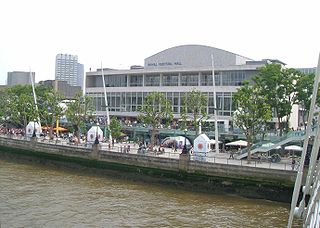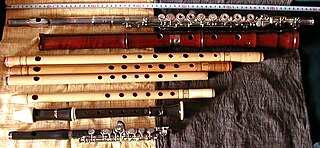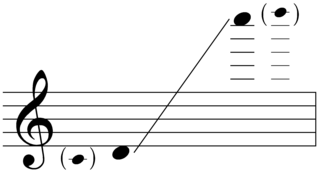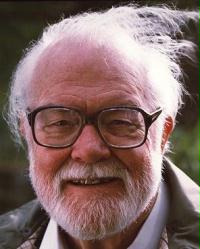The Cello Concerto No. 2, Opus 126, was written by Dmitri Shostakovich in the spring of 1966 in the Crimea. Like the first concerto, it was written for Mstislav Rostropovich, who gave the premiere in Moscow under Yevgeny Svetlanov on 25 September 1966 at the composer's 60th birthday concert. Sometimes the concerto is listed as being in the key of G, but the score gives no such indication.
Symphony No. 5 in D major by English composer Ralph Vaughan Williams was written between 1938 and 1943. In style it represents a shift away from the violent dissonance of the Fourth Symphony, and a return to the more romantic style of the earlier Pastoral Symphony. It is also noteworthy as perhaps the quietest symphony Vaughan Williams ever wrote, with only a very few passages rising even to a forte. The texture throughout the work is strongly dominated by the strings.
A London Symphony is the second symphony composed by Ralph Vaughan Williams. The work is sometimes referred to as the Symphony No. 2, though it was not designated as such by the composer. First performed in 1914, the four-movement symphony was lost, reconstructed and later modified by Vaughan Williams.
The Young Person's Guide to the Orchestra is a 1945 musical composition by Benjamin Britten with a subtitle Variations and Fugue on a Theme of Purcell. It was based on the second movement, "Rondeau", of the Abdelazer suite. It was originally commissioned for the British educational documentary film called Instruments of the Orchestra released on 29 November 1946, directed by Muir Mathieson and featuring the London Symphony Orchestra conducted by Malcolm Sargent; Sargent also conducted the concert première on 15 October 1946 with the Royal Liverpool Philharmonic in the Philharmonic Hall, Liverpool, England.
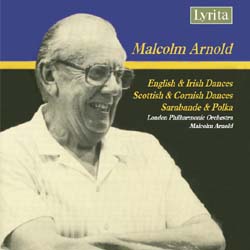
English Dances, Op. 27 and 33, are two sets of light music pieces, composed for orchestra by Malcolm Arnold in 1950 and 1951. Each set consists of four dances inspired by, although not based upon, country folk tunes and dances. Each movement is denoted by the tempo marking, as the individual movements are untitled.
Dmitri Shostakovich’s five-minute Festive Overture in A major, Op. 96, was written in 1947 to mark the 30th anniversary of the October Revolution. It was not performed however until the 37th anniversary, when Alexander Melik-Pashayev conducted it during a Nov. 6, 1954, concert in Moscow’s Bolshoi Theatre.

The French composer Hector Berlioz wrote a number of overtures, many of which have become popular concert items. They include overtures intended to introduce operas as well as independent concert overtures.
In Autumn, Op. 11, is a concert overture written by Edvard Grieg in 1865.
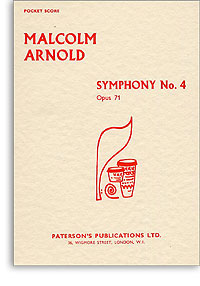
The Symphony No. 4, Op. 71 by Malcolm Arnold was finished on 13 July 1960. It is in four movements:

The Symphony No. 8, Op. 124 by Malcolm Arnold was finished in November 1978.

The Symphony No. 9, Op. 128 by Malcolm Arnold was finished in 1986. It is in four movements:
The Symphony No. 1 Elevamini is an orchestral work by Australian-born composer Malcolm Williamson.
The Piano Concerto No. 3 is a 32-minute concerto by the Australian-born composer Malcolm Williamson.
Lento for Strings is an orchestral work by the Australian composer Malcolm Williamson.
Johannesburg Festival Overture is a composition for orchestra by the English composer William Walton, composed for the 70th anniversary of Johannesburg in 1956.
The Golden Spinning Wheel, Op. 109, B. 197, is a symphonic poem for orchestra by Antonín Dvořák, composed from January to April 1896. The work is inspired by the poem of the same name found in Kytice, a collection of folk ballads by Karel Jaromír Erben.
The Third Essay, Op. 47, is a short orchestral work composed by Samuel Barber in 1978. The score is dedicated to Audrey Sheldon.

The Symphony No. 1 in F major, Op. 29, is a three-movement orchestral composition by the Finnish composer Leevi Madetoja, who wrote the piece from 1914–16 at the dawn of his professional career. Although late-Romantic in style, the symphony carefully eschews the extravagance and overindulgence typical of debut efforts, placing it among the most "mature" and restrained of first symphonies. Accordingly, the First is the shortest and most concentrated of Madetoja's three essays in the form and is the only one of his symphonies not to adhere to the traditional four-movement symphonic template.
Symphony No. 1 in G minor, "Sérieuse", is an orchestral work by Swedish composer Franz Berwald. It was premiered on December 2 1842 in a concert at the Royal Opera, Stockholm given by the Swedish Royal Court Orchestra conducted by the composer's cousin Johan Fredrik Berwald. This first performance was not a success, leading to this symphony being the only one of Berwald's mature symphonies to be performed during his lifetime;.


